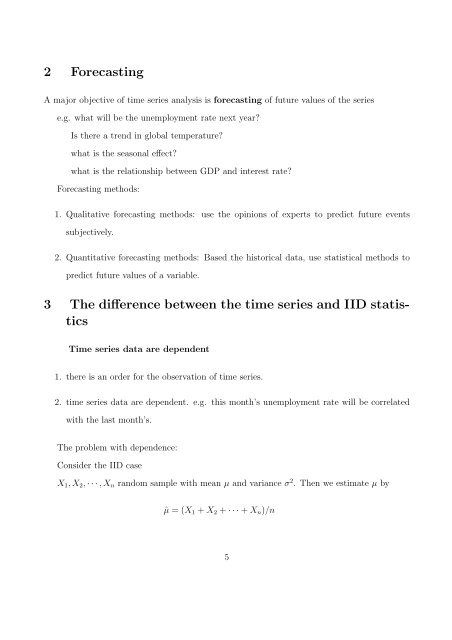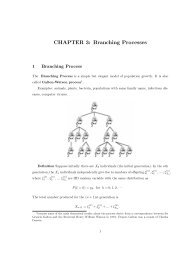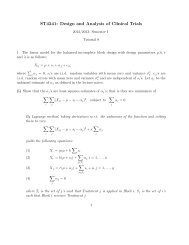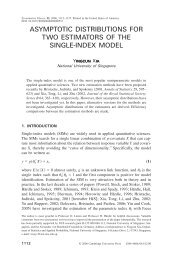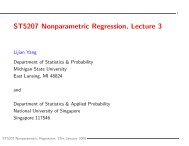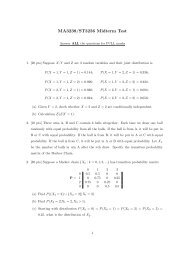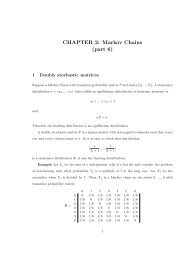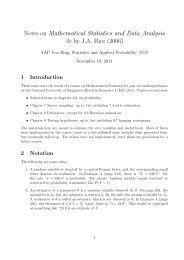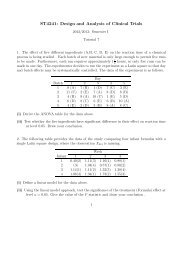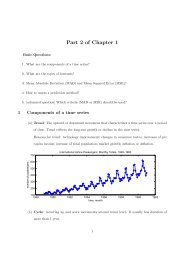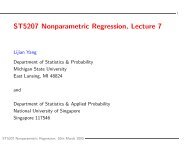CHAPTER 1: An introduction to time series and forecasting
CHAPTER 1: An introduction to time series and forecasting
CHAPTER 1: An introduction to time series and forecasting
Create successful ePaper yourself
Turn your PDF publications into a flip-book with our unique Google optimized e-Paper software.
2 Forecasting<br />
A major objective of <strong>time</strong> <strong>series</strong> analysis is <strong>forecasting</strong> of future values of the <strong>series</strong><br />
e.g. what will be the unemployment rate next year?<br />
Is there a trend in global temperature?<br />
what is the seasonal effect?<br />
what is the relationship between GDP <strong>and</strong> interest rate?<br />
Forecasting methods:<br />
1. Qualitative <strong>forecasting</strong> methods: use the opinions of experts <strong>to</strong> predict future events<br />
subjectively.<br />
2. Quantitative <strong>forecasting</strong> methods: Based the his<strong>to</strong>rical data, use statistical methods <strong>to</strong><br />
predict future values of a variable.<br />
3 The difference between the <strong>time</strong> <strong>series</strong> <strong>and</strong> IID statistics<br />
Time <strong>series</strong> data are dependent<br />
1. there is an order for the observation of <strong>time</strong> <strong>series</strong>.<br />
2. <strong>time</strong> <strong>series</strong> data are dependent. e.g. this month’s unemployment rate will be correlated<br />
with the last month’s.<br />
The problem with dependence:<br />
Consider the IID case<br />
X 1 , X 2 , · · · , X n r<strong>and</strong>om sample with mean µ <strong>and</strong> variance σ 2 . Then we estimate µ by<br />
ˆµ = (X 1 + X 2 + · · · + X n )/n<br />
5


